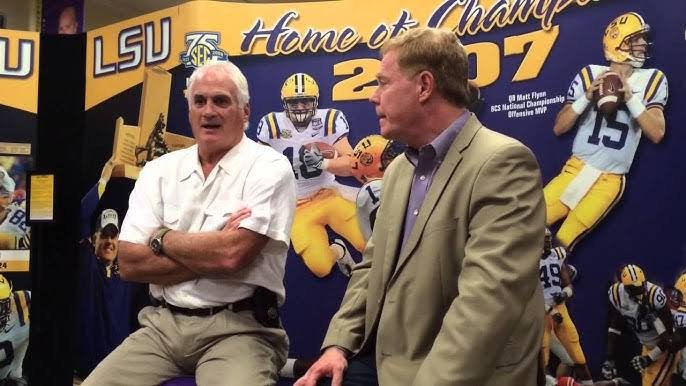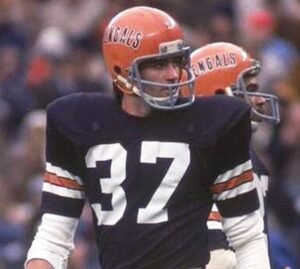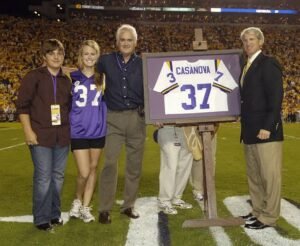
Tommy Casanova, one of LSU’s most celebrated football legends, has been honored with a statue in Baton Rouge, marking his enduring legacy both on and off the field.
🏈 A Storied Career at LSU

Casanova’s tenure at LSU from 1969 to 1971 was marked by exceptional versatility and athleticism. He excelled as a cornerback, running back, and return specialist, earning the distinction of being a three-time All-American. Notably, during a 1970 game against Ole Miss, he tied a national record by returning two punts for touchdowns, propelling LSU to a decisive 61–17 victory and securing an Orange Bowl berth . His outstanding performance led to his selection as the cover athlete for Sports Illustrated’s 1971 College Football Preview.
🏆 Honors and Recognition

In recognition of his contributions, LSU retired Casanova’s jersey number 37 in 2009, making him one of only three players to receive this honor, alongside Billy Cannon and Jerry Stovall . He was inducted into the Louisiana Sports Hall of Fame in 1985, further cementing his status as a football
🗿 The Statue in Baton Rouge
A statue commemorating Casanova stands in Baton Rouge, celebrating his legacy and contributions to LSU football. Visitors have noted the statue as a highlight during local tours, indicating its significance as a landmark in the community .
👨⚕️ Life Beyond Football
After retiring from professional football, where he earned three Pro Bowl selections with the Cincinnati Bengals, Casanova pursued a career in medicine, becoming an eye surgeon . His dedication to service extended to his community, where he provided pro bono medical care, including work with individuals affected by leprosy.
Tommy Casanova’s return to Baton Rouge and the unveiling of his statue serve as a testament to his remarkable journey—from a versatile athlete at LSU to a respected medical professional—highlighting his enduring impact on the community and the sport.


